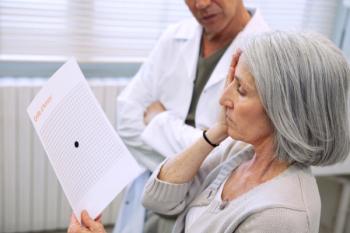
Age of Myopia Onset May Impact Risk of High Myopia in Adulthood
The risk of developing high myopia is relatively high among children with myopia onset at a young age, while each year of delay in the age of onset substantially reduces the chance of developing high myopia in adulthood.
The risk of developing high myopia is relatively high among children with
The World Health Organization
Development of high myopia carries risks of irreversible blinding complications including glaucoma, retinal detachment, and myopic maculopathy. “It is widely acknowledged that the earlier the age at onset [of myopia], the greater the percentage of the population with high myopia,” researchers wrote. “An epidemic of early-onset myopia might suggest an impending epidemic of high myopia.”
To determine the risk of developing high myopia in adulthood in association with specific ages at myopia onset, investigators conducted a population-based prospective cohort study. Data were gleaned from the Guangzhou Twin Eye Study, which began in 2006 in China. At baseline, twins aged 7 to 15 years were recruited to the study while follow-up visits were completed annually.
For the current study, researchers analyzed annual examination data collected between July 11, 2006, and August 31, 2018. Any individual with myopia onset at age 16 or older were excluded from the study.
A total of 443 individuals were included in the analysis and the majority (55.8%) were female. Data showed mean (SD) age of myopia onset was 11.7 (2) years. Over the course of the study, 54 (12.2%) developed high myopia in adulthood (age 17 or older).
Data showed:
- Among participants with age at myopia onset of 7 or 8 years, 14 of 26 (53.9%; 95% CI, 33.4%-73.4%) developed high myopia in adulthood
- Among those with onset at 9 years of age, 12 of 37 (32.4%; 95% CI, 18.0%-49.8%)
- Among those with onset at 10 years of age, 14 of 72 (19.4%; 95% CI, 11.1%-30.5%)
- Among those with onset at 11 years of age, 11 of 78 (14.1%; 95% CI, 7.3%-23.8%)
- Among those with onset at 12 years or older, 3 of 230 (1.3%; 95% CI, 0.2%-3.8%)
Using multivariate logistic regression researchers found “the risk of developing high myopia in adulthood decreased significantly with delay in the age at myopia onset (odds ratio, 0.44; 95% CI, 0.36-0.55; P < .001), from greater than 50% for 7 or 8 years of age to approximately 30% for 9 years of age and 20% for 10 years of age.”
The results highlight the need for implementation of myopia prevention strategies, such as increased outdoor time, authors argued.
Future studies with a larger sample size ought to be conducted to validate or modify the risks established. Results also may not be generalizable to other populations as the risk of developing high myopia could depend on sample ethnicity, culture, and education intensity.
Reference:
Hu Y, Ding X, Guo X, Chen Y, Zhang J, He M. Association of age at myopia onset with risk of high myopia in adulthood in a 12-year follow-up of a Chinese cohort. JAMA Ophtalmol. Published online September 17, 2020. doi:10.1001/jamaophthalmol.2020.3451
Newsletter
Stay ahead of policy, cost, and value—subscribe to AJMC for expert insights at the intersection of clinical care and health economics.






























































